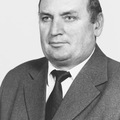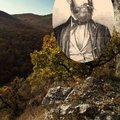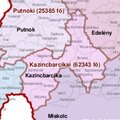2010.03.22. 09:37
Település >> Kalauz Magyar-Német-Angol
Első írásos említése 1240-ből származik. A „Turduna” néven említett település valószínűleg a közeli dédesi vár tartozéka volt. IV. Béla, György fia Miklós gömöri ispánnak adta. Ekkor készült az a bizonyos oklevél, melyben először szerepel a falu neve és a település határának leírása, amely egészen a Szentlélekig, a pálos kolostorig terjedt. A XIV. században a dédesi várral együtt a Pálóczi család kezébe került. A következő évszázad a gyakori tulajdonos váltások kora. Főbb birtokosok a Szatmáryak, a Szentimreiek, a Csányiak. A Rákóczi-szabadságharcot követően a reformátusok 1732-ben a régi helyén új fatemplomot építettek, 1775-ben tűz ütött ki és leégett. 1786-1789 között sikerült ismét felépíteni, mely ma is áll.
A Bükk lábánál fekvő, egykor vadregényes környezetben elhelyezkedő falu ma az egyik legjelentősebb Jókai-emlékhelyek közé tartozik. Jókai Mór a szabadságharc bukása után a feltételezett megtorlások elől itt keresett és talált menedéket addig, míg felesége Laborfalvi Róza nem szerzett számára menlevelet. A Jókai-háznak nevezett épületben kapott helyet a nagy mesemondó emlékszobája, tájházzal és a Bükki Nemzeti park állandó kiállításával együtt.
Infrastruktúrája tejesen kiépített: ivóvíz-, szennyvízhálózat, vezetékes gáz, 27 csatornás kábel TV, közvilágítás korszerű, 11 km úthálózatának a portalanítása a végéhez közeledik.
Turisztikai lehetőseink: elkészült egy 3 ha-os halastó, melyet további 3 követ. Megvalósítás alatt áll egy korszerű sportkomplexum, valamint a volt honvédségi ingatlan hasznosítása üdülőpark kialakítása.

Das erste schriftliche Denkmal stammt aus dem Jahre 1240. Die als „Turduna” erwä
hnte Siedlung gehörte wahrscheinlich der isn der Nähe stehenden Burg von Dédes. Béla IV. hat sie Nikolaus, dem Gespan von Gömör, dem Sohn von Georg gegeben. Da wurde die Urknde gemacht, in der der Name des Dorfs und die Beschreibung der Siedlungsgrenze das erste Mal vorkemmen, die sich bis zu dem Heiligen Geist, dem Pauliner Kloster ausdehnte. In dem XIV. Jahrhundert kam sie mit der Burg von Dédes in den Besitz der Familie Pálóczi. Das nächste Jahrhundert war die Zeit der häufigen Besitzerwechsel. Die bedeutendsten Besitzer waren die Familie Szathmáry, Szentimrei, Csányi. Nach dem Freiheitskampf von Rákóczi haben die REformierten im Hahre 1732 auf dem Ort der alten Kirche eine neue Holzkirche aufgebaut, im Hahre 1775 gab es ein großes Feuer und sie ist abgebrannt. Zwischen 1786-1789 wurde sie wieder aufgebaut, sie steht auch noch heute.
Am Fuß von Bükk liegendes, einst sich in wildromanticher natur befindendes Dorf ist heute eine der bedeutendsten Jókai – Gedenkstätten. Jókai Mór hat nach dem Zusammenbruch des Freiheitskampfs hier Zuflucht von den Vergeltungen gesucht und gefunden, bis ihm seine Frau Laborfalvi Róza einen Schutzbrief verschafft hat. Im dem Gebäude – Haus von Jókai – sind das Gedenkzimmer von dem Großen Märchenerzähler mit dem Landshaus und der ständigen Ausstellung von dem Nationalpark von Bükk zu finen.
Ihre Infrastruktur ist ausgebaut: Trinkwasser – und Schmutzwassernetz, Leitungsgas, Kabel TV mit 27 Kanälen, ihre Straßennetzes wird bald beendet. Die touristischen Möglichkeiten: ein 3 Hektar großer Fischteich wurde errichtet und noch 3 werden gebaut. Ein moderner Sportkomplex und noch ein Ferienpark werden gebaut, das Gebäude der ehemaligen Honved wird benutzt.

The settlement was first mentioned in a document in 1240 as „Turduna”, probably it belonged to the near castle of Dédes. George , the son of Béla IV. gave itt o Nicolas, the bailiff of Gömör. The document in which the name and the borders of the settlement were first written down was made at that time. The borderline expanded to the Holy Soul cloister. Int he 14” century, the Pálóczi family received the settlement and the castle of Dédes. Int eh nest century, the settlement had many lords. The main owners were the Szathmáry, the Szentimrei, and the Csányi families.
After the Rákóczi war of independence, in 1732 the reformed believers built a new wooden church int he place of the old one. It burnt in 1775. Between 1786 and 1789, they succeeded to rebuilt, and it still exists.
The willage at the foot of the Bükk lied once in a romantic area, it belongs today to the most important Jókai memorial places. After the fall of the war of independence, Mór Jókai looked for and found here protection against the possible sanctions, until his wife, Róza Laborfalvi procures safeconduct for him. The memorial room of the great storyteller and the constant exhibition of the National Park of Bükk can be found int he so-called „Jókai house”. The infrastrukture is fully built up: drinkingwater system, sewer, piped gas, cable TV with 27 channels, it has modern public lighting, and the dustcontrol of the 11 km road system is almost completed. Possibilities for tourists: a three ha big fishpond is readymade, three other follow it. A modern sports hall and a holiday resort are going to be built, and the sometime military building will be utilized.
Szólj hozzá!
Címkék: köszöntő falutörténelem tardona
A bejegyzés trackback címe:
Kommentek:
A hozzászólások a vonatkozó jogszabályok értelmében felhasználói tartalomnak minősülnek, értük a szolgáltatás technikai üzemeltetője semmilyen felelősséget nem vállal, azokat nem ellenőrzi. Kifogás esetén forduljon a blog szerkesztőjéhez. Részletek a Felhasználási feltételekben és az adatvédelmi tájékoztatóban.










